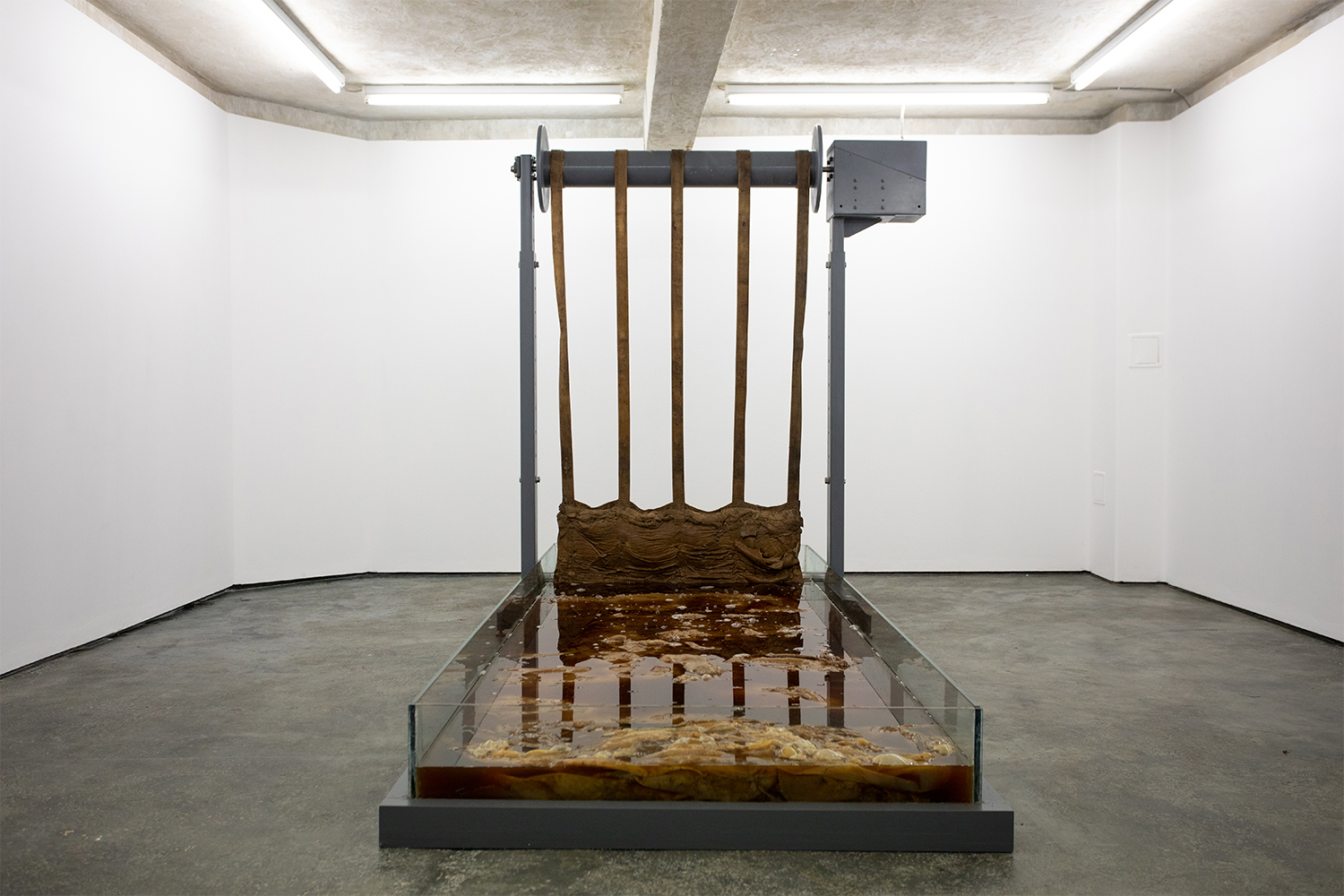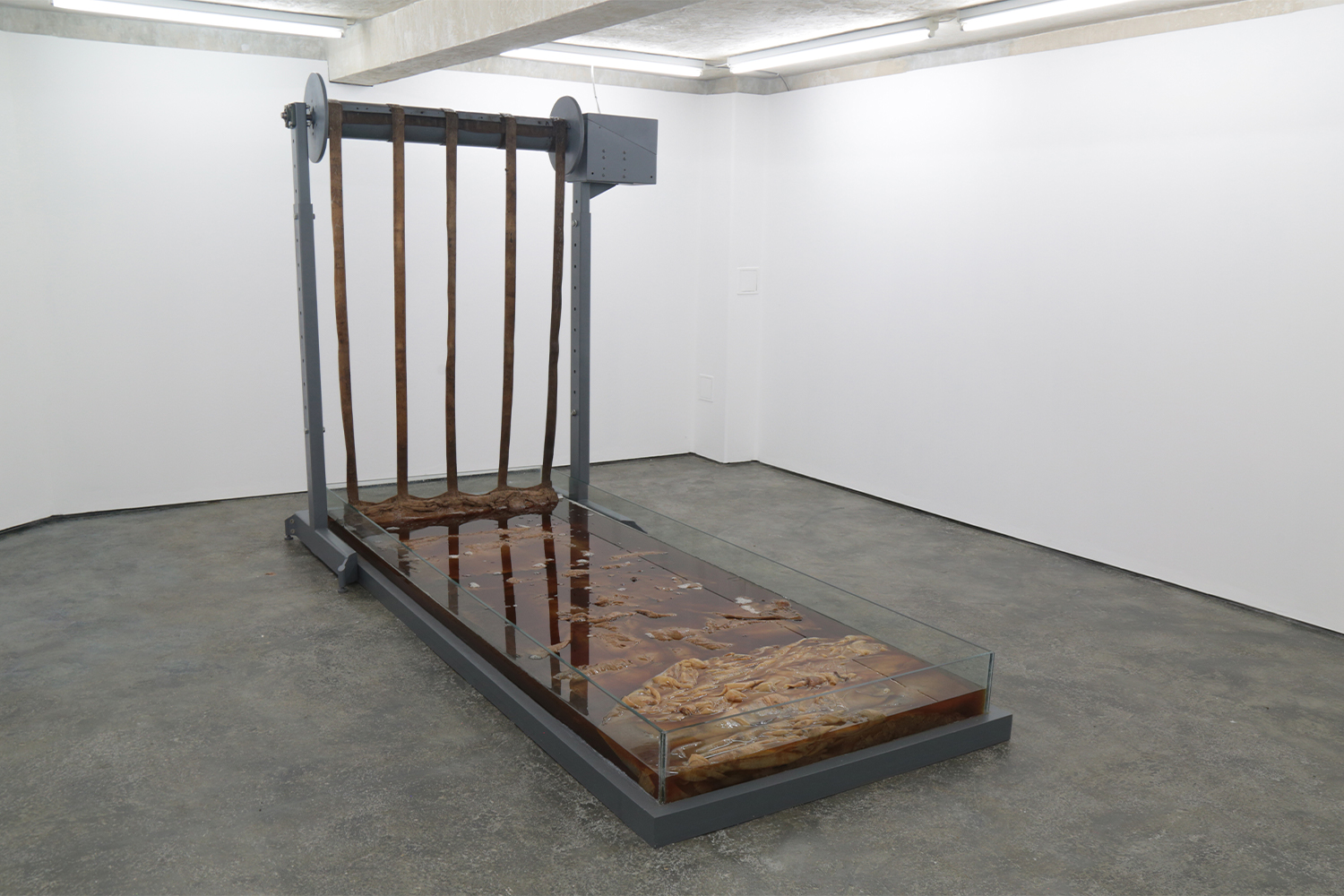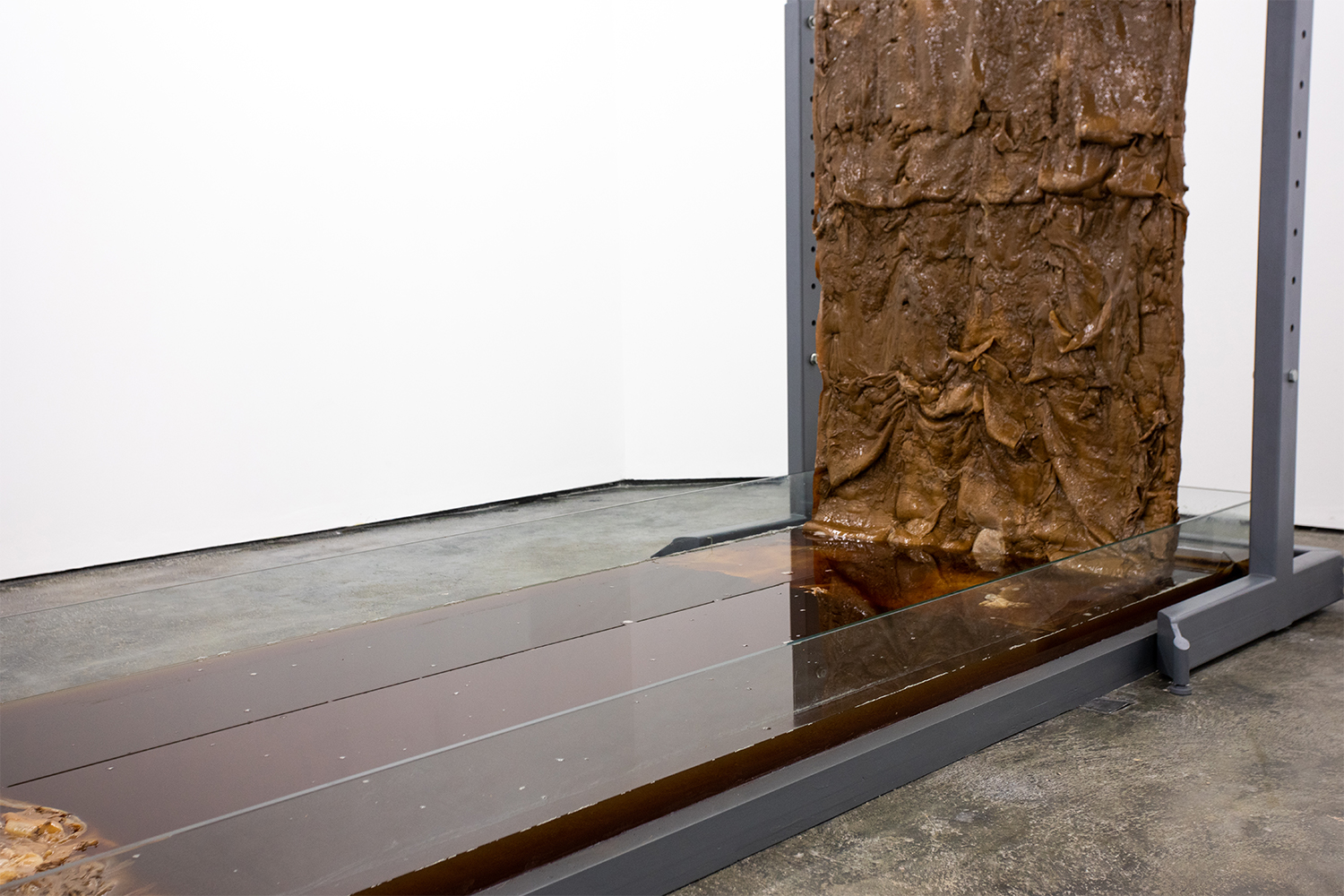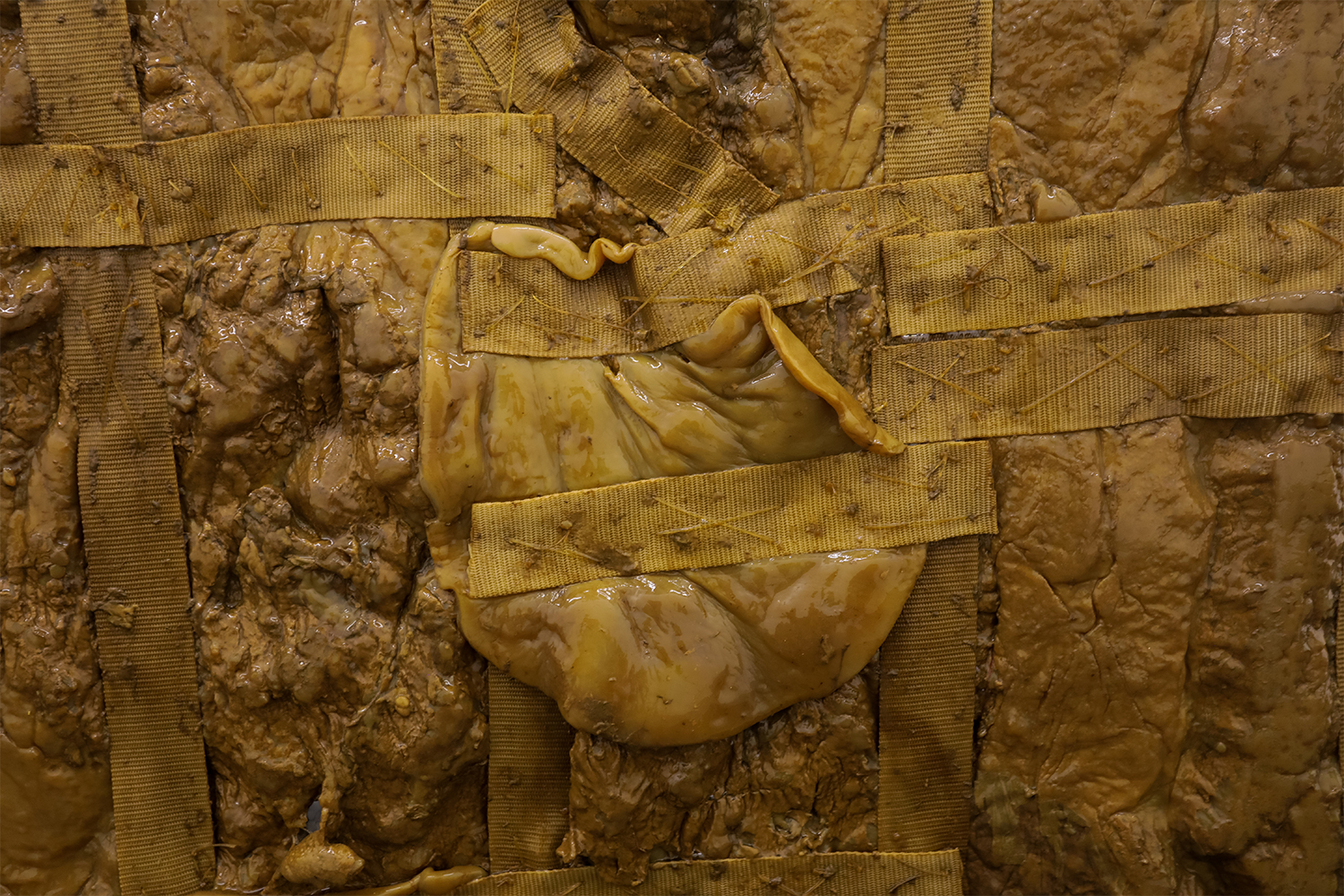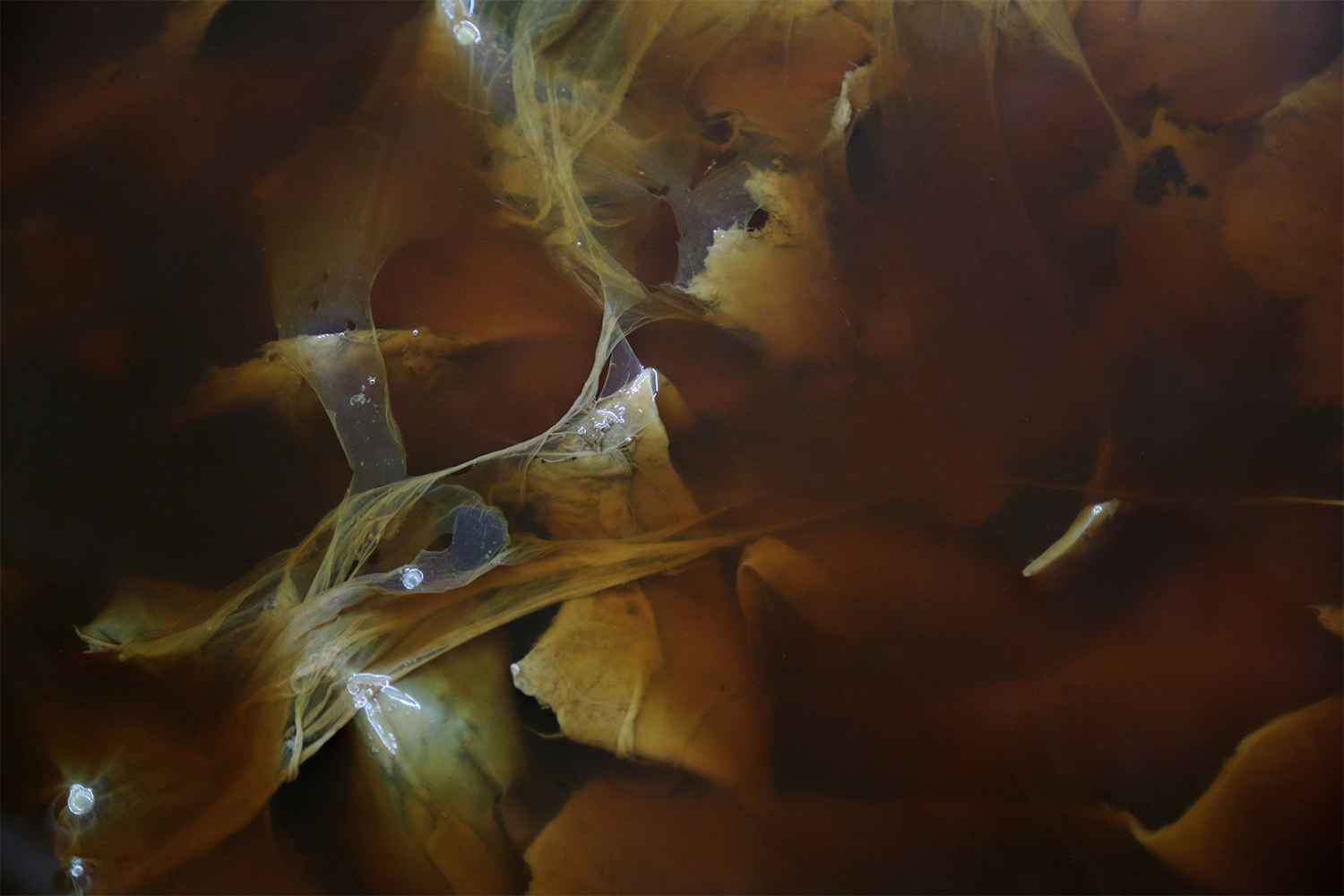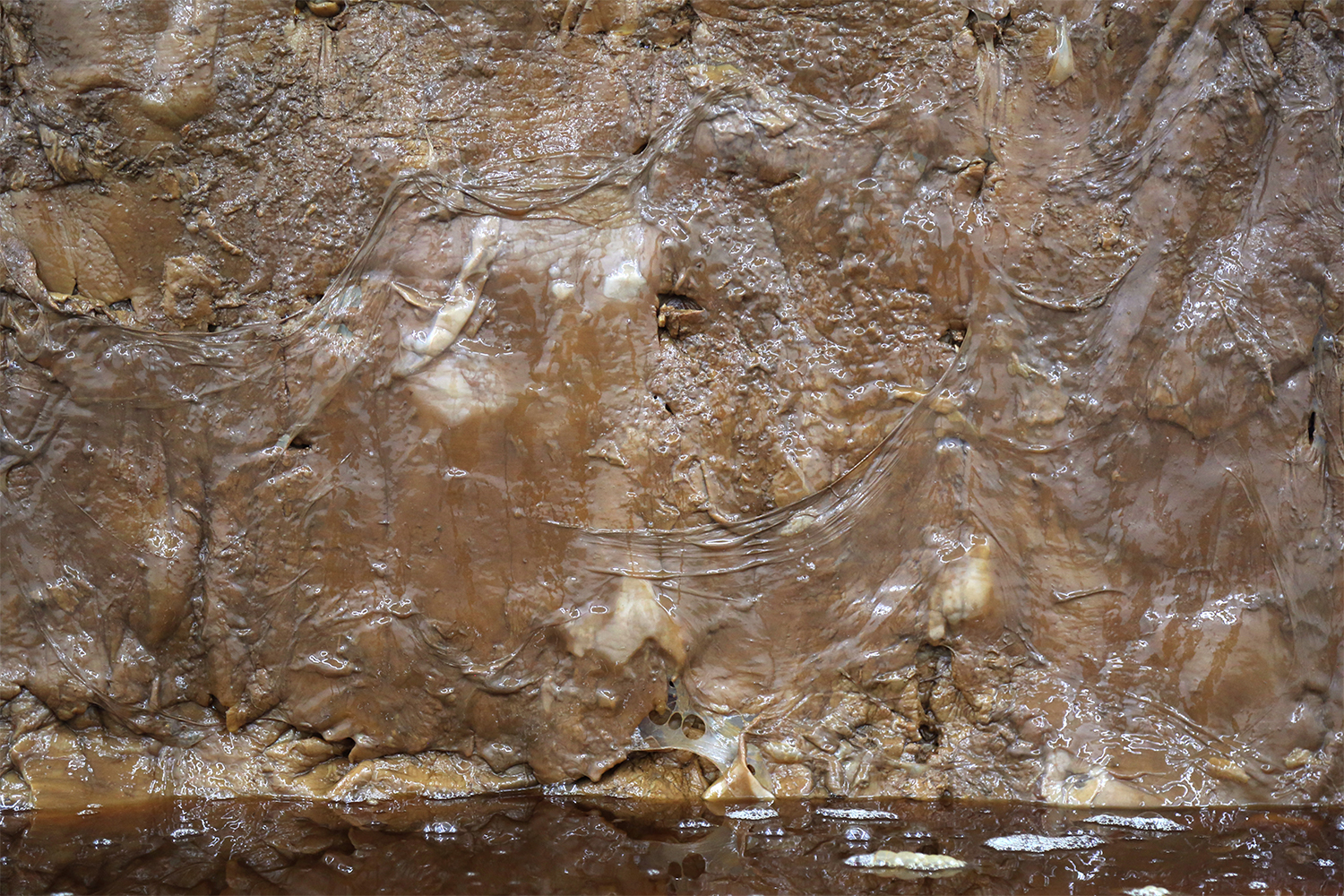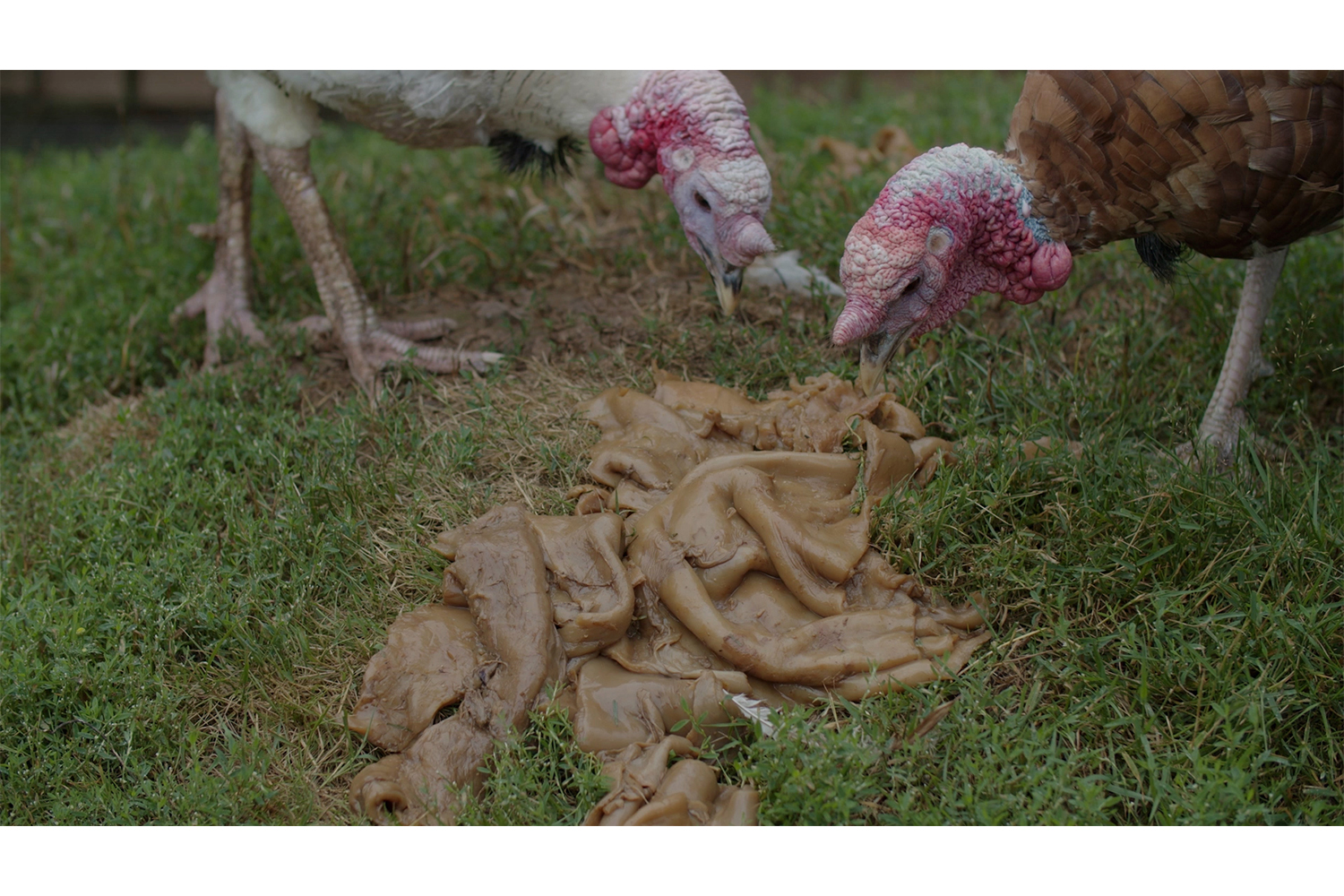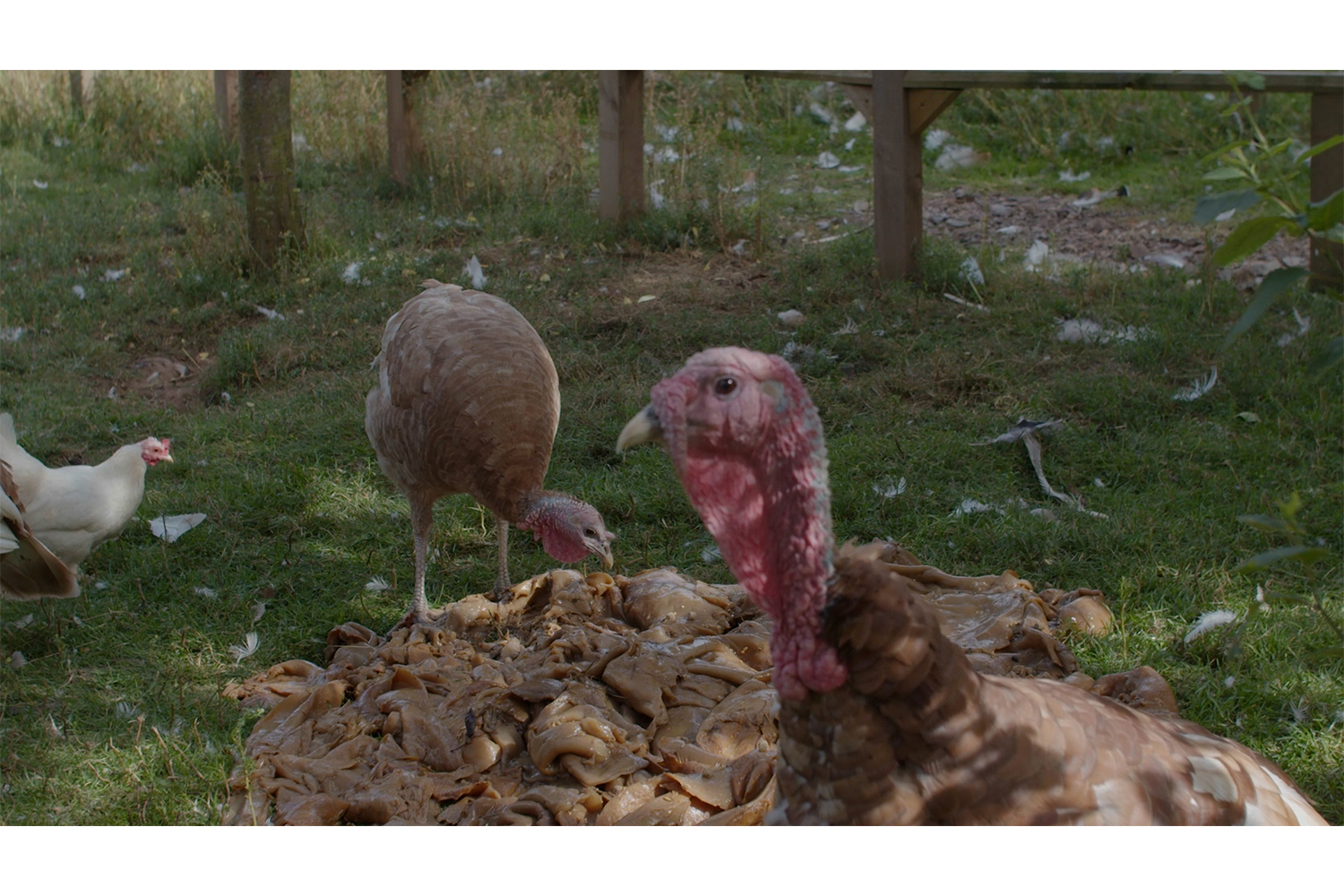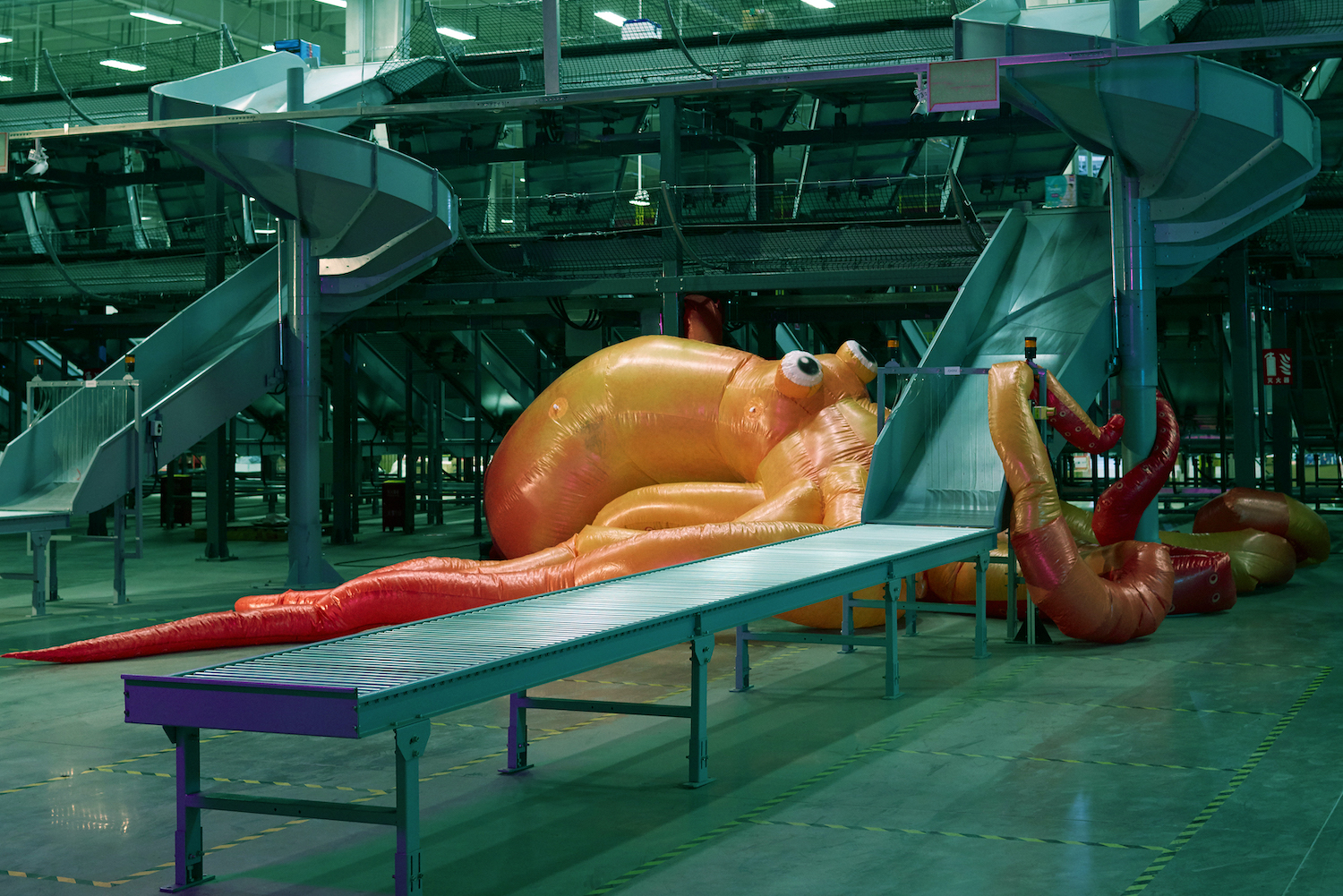When I spoke with Bianca Hlywa on Zoom for the first time, I had not yet seen her exhibition “Residual Yeast” at Gossamer Fog. However, after becoming more familiar with Hlywa’s practice, and in particular after seeing her grandiose installation Thermaloop (all works 2022), I began to experience multiple sensations at the same time. Some of these feelings she had intended to provoke in viewers, but others were rather unexpected. What I felt was close to a pious feeling. It was somehow like an experience of the sublime, or close to being in a sanctuary before a mesmerizing altar, but at the same time almost a raw, primal encounter. It also sent tingling sensations down my spine, as if I were listening to an ASMR video. I was confused but equally in awe of this beast of a creature.
Thermaloop is an installation consisting of a two-hundred-kilo, three-meter SCOBY (symbiotic culture of bacterial yeast) made using 1,493 tea bags and approximately sixty-six kilograms of sugar. It sits in a glass tank and continuously moves up and down in its starter fluid via a custom-made motorized mechanism. Hlywa has a history of growing SCOBY in different types of spaces, and has often gotten into trouble for doing so, which speaks to the fear people tend to have of messy, leaky, and unfamiliar organic material. In this case I think the scale of the work is a significant aspect. Taking the steps down into the gallery space and confronting the monumental Thermaloop, one encounters all the strangers within. “Disgust” is not the word I would use to describe my initial reaction to it. Perhaps due to my interest in material bodies, the texture of the large-scale SCOBY evoked the insides of the human body, resulting in a partial sense of eerie familiarity — a sort of blurring of the boundaries between self and other. One encounters not merely a disgusting and distinct other, but a creature that could well be inside you, a part of you. The living, growing body in front of you makes you think of your own materiality and corporeality. Prior to my physically encounter with the work in the gallery space, I asked the artist about the element of sound in the installation. “There are two dominant sounds,” Hlywa answered, “the humming of the motor and the dripping sound of the wet SCOBY from its top point.” The pungent smell is an even more defining feature of the experience, and one of the reasons for audience aversion — a reaction reinforced by the fruit flies that circle the installation. The response Hlywa aims to provoke with the installation, as well as in some of her previous SCOBY-based works, is somewhere between repulsion and amazement. One is simultaneously drawn to the majesty of the organic material, intimidated by its mysterious origin, and repelled by its smells, drips, creases, and textures. It brought to mind a day in elementary school when I took a store-bought sheep’s stomach to school for a science class. We were learning about the insides of animals and, I guess by extension, our human selves. I carried the tripe in a leaky plastic bag, and walked around smelling like sheep’s stomach for the entire day. I remember how grossed out I was by this wetness that followed me around. The unbearable smell and the sliminess repulsed me deeply. Hence, the potential for a disagreeable initial reaction to SCOBY was relatable.
Thermaloop is and feels alive. The motor’s slow up-and-down lifting motion, like something found in an intensive care unit, suggests that SCOBY is somehow a breathing body. The machine is subtly and slowly helping to keep it alive. When the vulnerable organic being is removed from the liquid in the glass tank and fully revealed to the viewer, the impact is powerful and sublime. The SCOBY’s act of becoming is part of its own steady nature, but also depends upon the display techniques and interventions of its creator. I can see and understand what Hlywa means when she says she feels comforted by the presence of the SCOBY and by its continuous growth. Thermaloop is a collaboration between Hlywa, her nonhuman collaborator, and the machine. What is being displayed is also their relationship and their entangled beings. In the next room is Hlywa’s nine-minute video Orbital Shakes, filmed at the Bird Garden of Scotland and portraying chickens, geese, and turkeys pecking piles of SCOBY. Out of the gallery context and lying on grass, the SCOBY has somehow transformed into a seemingly different kind of material. Its display method and scale has changed and therefore completely altered its affect. As I watch the birds devour the fleshy SCOBY, which then presumably intervenes in their gut microbiota, I am startled by this process of ingestion of a nonhuman organic material by another animal. It is alienating to watch the birds walk and slip upon the wet surface of the SCOBY. The wet aesthetics, as opposed to the usual dry food birds are fed, and the uncanny fleshy look of the SCOBY, hints at some sort of reversed other-than-human animal/human ingestion. It is weird and thrilling at the same time.
I ask Hlywa what she is planning to do with the SCOBY after the exhibition closes down. “I might keep it in my garden for a while and probably dry it.” She adds that she is working on exploring the ways SCOBY can be used by small-scale farmers for chicken consumption. “Residual Yeast,” by tracing and expanding upon our often-invisible collaborations with the other-than-human world in such a smart and layered way, leaves me feeling amazed and hopeful.

